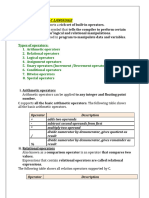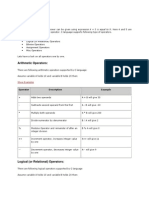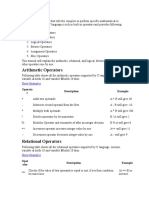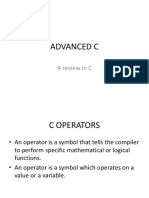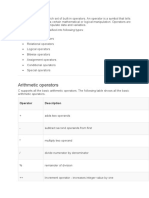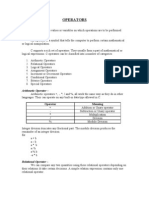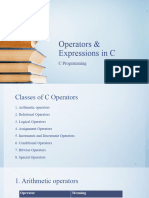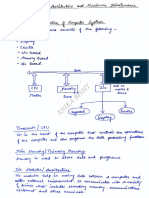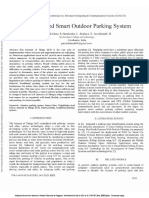0% found this document useful (0 votes)
29 views16 pagesModule 2
The document provides an introduction to C programming, focusing on operators, type conversion, and typecasting. It covers various types of operators including arithmetic, relational, equality, logical, unary, conditional, bitwise, and assignment operators, along with their syntax and examples. Additionally, it explains type conversion and typecasting in C, detailing how data types can be promoted or forced into different types.
Uploaded by
madhukeshs0742Copyright
© © All Rights Reserved
We take content rights seriously. If you suspect this is your content, claim it here.
Available Formats
Download as PDF, TXT or read online on Scribd
0% found this document useful (0 votes)
29 views16 pagesModule 2
The document provides an introduction to C programming, focusing on operators, type conversion, and typecasting. It covers various types of operators including arithmetic, relational, equality, logical, unary, conditional, bitwise, and assignment operators, along with their syntax and examples. Additionally, it explains type conversion and typecasting in C, detailing how data types can be promoted or forced into different types.
Uploaded by
madhukeshs0742Copyright
© © All Rights Reserved
We take content rights seriously. If you suspect this is your content, claim it here.
Available Formats
Download as PDF, TXT or read online on Scribd
/ 16










